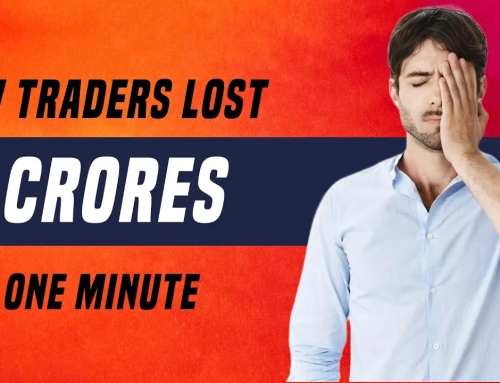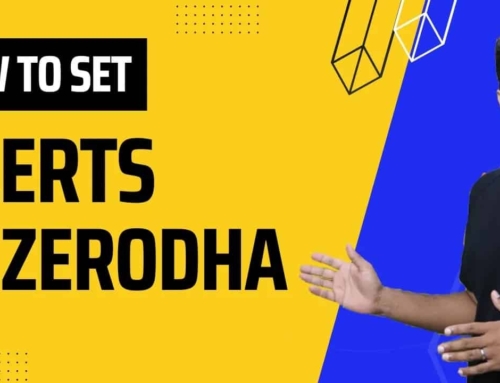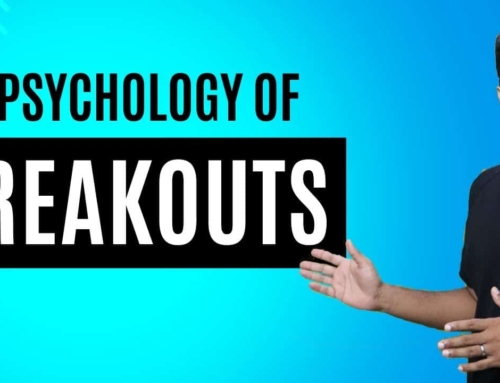What is Short Covering?
Short covering is a very interesting phenomenon, especially for intraday traders.
The rallies that are triggered by short covering can be either amazing trading opportunities or a trader’s worst nightmare and depends on which side of the trade you are on.
For understanding short-covering, you first need to understand the concept of shorting and the dangers associated with that.
So let’s talk about short covering.
When you short shares of a company, you open a short position. To close this short position, you have to buy the shares back from the market. This buying back of shares is called “short covering”.
So what’s so special about short covering that we had to make an entire video about it?
Well, what makes short covering special is that sometimes, the aggressive short-covering can trap a lot of short-sellers and that results in some spectacular short-covering rallies.
Let’s take an example to understand how short sellers get trapped. For the sake of simplicity, we will stick to the cash segment:
Let us take the stock of Yes Bank and we have the below case:
- Buyer has a long position &
- Short-seller with a short position in Yes Bank.
The buyer is expecting the prices to go up whereas Short-seller is expecting the prices to go down.
Now, between the two, it is not a fair fight because the short seller has 2 big disadvantages that the buyer doesn’t.
First, the short seller is under severe time pressure. He has to close his position by the end of the day and so he doesn’t have the luxury of carrying the short position home as he has borrowed the shares from his broker and that has to be settled the same day. The buyer, on the other hand, can easily carry over the position for as long as he pleases.
The second big disadvantage that the short seller has to deal with is the loss potential. A buyer’s maximum loss in a trade is limited to the traded amount. So for a trade of Rs.1 lakh, the maximum he can lose is Rs.1 lakh. A short seller on the other hand has unlimited loss potential. On the trade of Rs.1 lakh, he can lose Rs.3 lakhs, Rs.5 lakhs and even Rs.10 lakhs.
Due to these two factors, short-sellers need to be much more cautious in their trade than buyers.
Now let’s see how the trading psychology of short-sellers play out in a real-life context where there are thousands of buyers and are thousands of sellers.
Let’s say some good news came in the case of Yes bank which causes it to move up. A few short-sellers, who have very low-risk tolerance get scared easily and decide to close this position by buying shares of Yes bank.
Now, there are fresh buyers of Yes Bank and there are these short-sellers who are buying to close their position. This double buying fuels the rally and Yes bank moves up by another few % points. This makes more short sellers close their positions and so on. These rallies are a force of nature and take down the strongest of the bears.
This rally fueled by short-sellers desperately buying back the shares is called a short-covering rally.
There are a lot of ways to spot short covering rallies and we currently don’t have time to cover all those here. However, if a trader can spot such a rally, a lot of money can be made by taking a long position.
Not every short covering will end up in a rally. You need news strong enough to scare the most bearish of traders
So, I hope you understood the concept of short covering and how that sometimes triggers short-covering rallies.
Howdy!
If you’re here for the first time, let’s get introduced.
VRD Nation is India’s premier stock market training institute and we (Team VRD Nation) are passionate about teaching each and every aspect of investing and trading.
If you’re here for the first time, don’t forget to check out “Free Training” section where we have tons of free videos and articles to kick start your stock market journey.
Also, we got two awesome YouTube channels where you can continue the learning process.
Must-Read Articles
What is Short Covering?
Short covering is a very interesting phenomenon, especially for intraday traders.
The rallies that are triggered by short covering can be either amazing trading opportunities or a trader’s worst nightmare and depends on which side of the trade you are on.
For understanding short-covering, you first need to understand the concept of shorting and the dangers associated with that.
When you short shares of a company, you open a short position. To close this short position, you have to buy the shares back from the market. This buying back of shares is called “short covering”.
So what’s so special about short covering that we had to make an entire video about it?
Well, what makes short covering special is that sometimes, the aggressive short-covering can trap a lot of short-sellers and that results in some spectacular short-covering rallies.
Let’s take an example to understand how short sellers get trapped. For the sake of simplicity, we will stick to the cash segment:
Let us take the stock of Yes Bank and we have the below case:
- Buyer has a long position &
- Short-seller with a short position in Yes Bank.
The buyer is expecting the prices to go up whereas Short-seller is expecting the prices to go down.
Now, between the two, it is not a fair fight because the short seller has 2 big disadvantages that the buyer doesn’t.
First, the short seller is under severe time pressure. He has to close his position by the end of the day and so he doesn’t have the luxury of carrying the short position home as he has borrowed the shares from his broker and that has to be settled the same day. The buyer, on the other hand, can easily carry over the position for as long as he pleases.
The second big disadvantage that the short seller has to deal with is the loss potential. A buyer’s maximum loss in a trade is limited to the traded amount. So for a trade of Rs.1 lakh, the maximum he can lose is Rs.1 lakh. A short seller on the other hand has unlimited loss potential. On the trade of Rs.1 lakh, he can lose Rs.3 lakhs, Rs.5 lakhs and even Rs.10 lakhs.
Due to these two factors, short-sellers need to be much more cautious in their trade than buyers.
Now let’s see how the trading psychology of short-sellers play out in a real-life context where there are thousands of buyers and are thousands of sellers.
Let’s say some good news came in the case of Yes bank which causes it to move up. A few short-sellers, who have very low-risk tolerance get scared easily and decide to close this position by buying shares of Yes bank.
Now, there are fresh buyers of Yes Bank and there are these short-sellers who are buying to close their position. This double buying fuels the rally and Yes bank moves up by another few % points. This makes more short sellers close their positions and so on. These rallies are a force of nature and take down the strongest of the bears.
This rally fueled by short-sellers desperately buying back the shares is called a short-covering rally.
There are a lot of ways to spot short covering rallies and we currently don’t have time to cover all those here. However, if a trader can spot such a rally, a lot of money can be made by taking a long position.
Not every short covering will end up in a rally. You need news strong enough to scare the most bearish of traders
So, I hope you understood the concept of short covering and how that sometimes triggers short-covering rallies.















![What is Virtual Contract Note [Zerodha]](https://www.vrdnation.com/wp-content/uploads/2023/10/maxresdefault-virtual-note-500x383.jpg)



Leave A Comment